How Many Watts Does a Keurig Use? Do They Consume Lots of Power?
-

- Last updated:
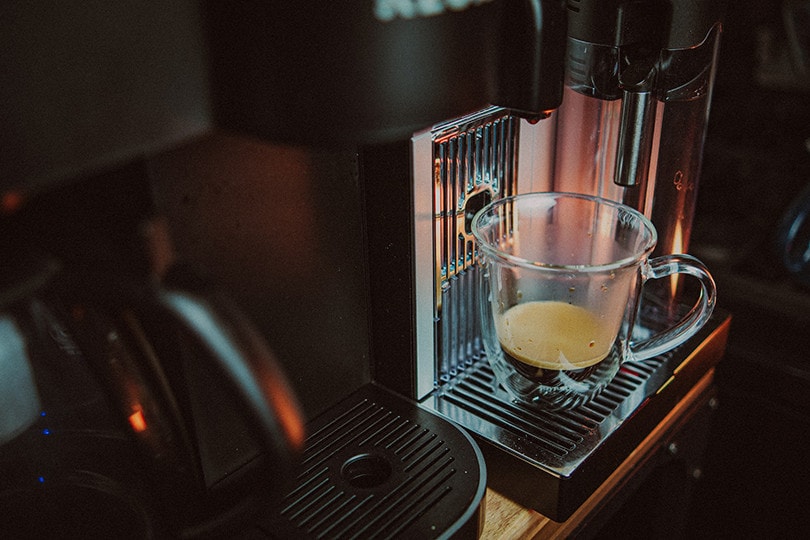
If we talk about coffee makers, one of the most popular brands in the world that easily comes into our minds is Keurig. A Keurig is a faithful servant that provides us with a piping hot cup of coffee each morning. But do we ever wonder how much energy it consumes? When heating, it consumes between 200–400 Watts, but the amount can rise to 1,500 watts upon powering on.
If you feel you’re paying a steep cost for the pleasure offered by a Keurig, this article is for you. We will focus on the energy consumption rate of Keurig. Also, we dive into the tips to help you minimize the energy costs for coffee makers. Enjoy the article as we dissect the topic!
What Exactly Is Wattage?
You must have come across wattage at some level in your schooling. It is a unit used to measure the electrical power that a device requires to operate. Wattage is obtained by multiplying the current (amps) and the energy force (volts).
However, you don’t have to calculate these figures manually to determine the wattage that your Keurig consumes unless you want to. Most often, manufacturers label this information on their appliances because it’s a crucial factor that buyers determine when deciding. The more watts a Keurig consumes, the higher the energy bill.
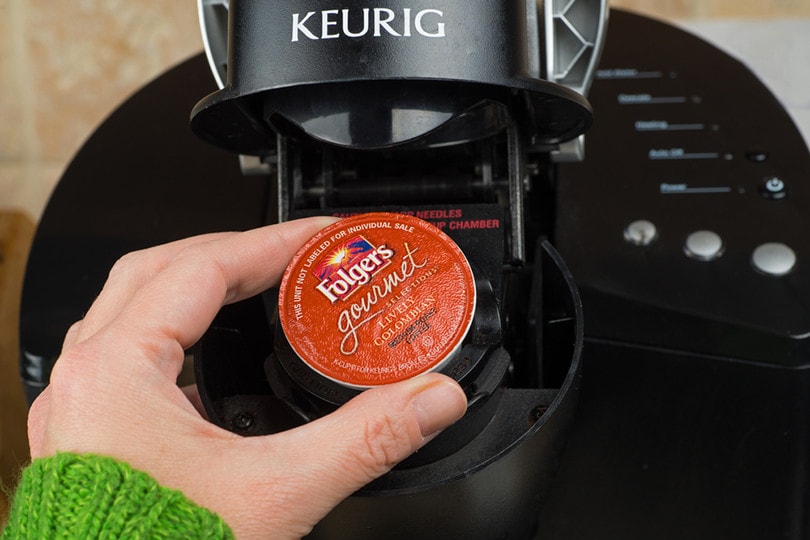
Wattage Required to Start Up and Heat a Keurig
According to Energy Star, different Keurigs require different input power inputs, ultimately defining the coffee maker’s power rating. But in most cases, a Keurig coffee maker utilizes 1,500 watts upon startup and uses the same power for as long as it makes the coffee. The brewing period typically takes roughly 3–5 minutes. If it isn’t switched off after that, the Keurig will consume between 200–400 watts to keep the coffee or water toasty.
The internal tank has a heating element with pulses and intervals to help regulate the water temperature, thus limiting energy consumption. In most cases, the energy cost per Keurig averages 0.08 Kilowatt-hours. This means a kilowatt-hour lets you brew about 12 pots of coffee.
Number of Watts Used by Keurig to Brew a Single Cup
Because it uses up to 1,500 watts to heat the water/coffee and another 200–400 to maintain the internal tank temperature, a Keurig may require around 2,000 watts to produce a single cup of coffee.
However, this value may vary from one model to another because of technology variations. Newer models are typically cheaper than older models but may cost more.
How Many Amps Does a Keurig Use?
Depending on the features and brand of the coffee maker, most home brewers use between 5 -13 amps to make coffee. Appliances with a lower voltage rating consume more currents than the higher-rated ones while using the same wattage.
All Keurigs and other kitchen appliances in the US are rated 110V–120V. If you intend to use a coffee maker with a higher rating, you’ll need a voltage converter for it to work. Such appliances are more marketable in overseas countries (Europe and other continents), but most manufacturers make different versions for both American and abroad markets. While higher-rated Keurigs require a converter, dual-voltage models can perfectly work without them.
Worth understanding, however, is that a higher voltage rating of a Keurig doesn’t imply that it consumes more wattage. Instead, it means your appliance transmits energy at fewer amperes to match its power consumption.
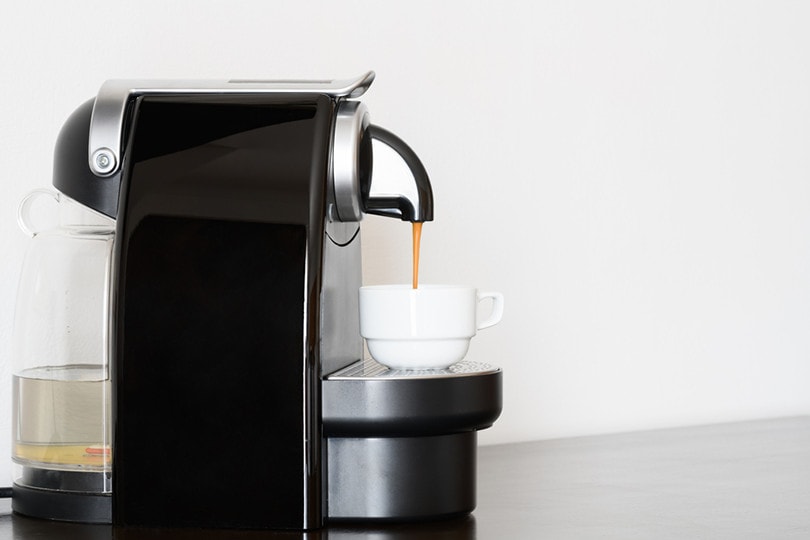
Can You Make Coffee Without Any Electricity?
You can make coffee without electricity only when you are not using a drip coffee maker. If your home’s electricity has been cut off, or your electricity line hasn’t yet been connected, the best option is to light a gas stove or campfire. Otherwise, you might have to wait 18 hours to brew your coffee without electricity.
How to Reduce the Energy Consumption of Keurig Machines
1. Buy a Cheaper Coffee Maker
The type is one of the most important factors when buying a coffee brewing machine. Here’s a little breakdown of the features of different Keurig models:
- Heating Plate: It uses a thermal carafe without a heating plate, thus saving energy by up to 23%. This type of Keurig does not stay on after completing brewing but may cause burnt flavors in your coffee.
- Dual Coffee Makers: A dual coffee maker relieves you of the effort of grounding the beans because it comes with an inbuilt grinder. However, it may consume more energy in the process. You can reduce its energy consumption rate by purchasing a hand grinder and coffee maker separately.
- Double-Boiler Espresso Machine: This coffee maker doesn’t use a lot of power to heat the steam boiler, which in turn heats the water. If you prefer adding milk to your coffee, a dual-boiler espresso machine would be perfect for your brewing needs.

2. Switch Off the Keurig
According to experts, turning off your appliance once the coffee boils helps reduce power consumption by up to 23%. While some appliances have adjustable auto-timers that switch them off after a preset duration, other coffee makers depend on a thermal carafe, meaning they must be shut down manually when the brewing process is complete.
However, it’s important to understand that most Keurigs store water in their heating tanks. As such, you should avoid switching them off if you will use them again anytime soon. By doing so, your Keurig will utilize the already hot water.
3. Brew a Carafe Size
As much as coffee often tastes better when fresh, you can consider brewing a carafe size to drink throughout the day. This makes more sense if you consume several cups of coffee daily.
Then, you may refrigerate the coffee throughout the day to help retain the flavor and warm it when it’s time to drink. Doing so helps you save the 1,500 watts required to heat the liquid every time you want to make another brew.
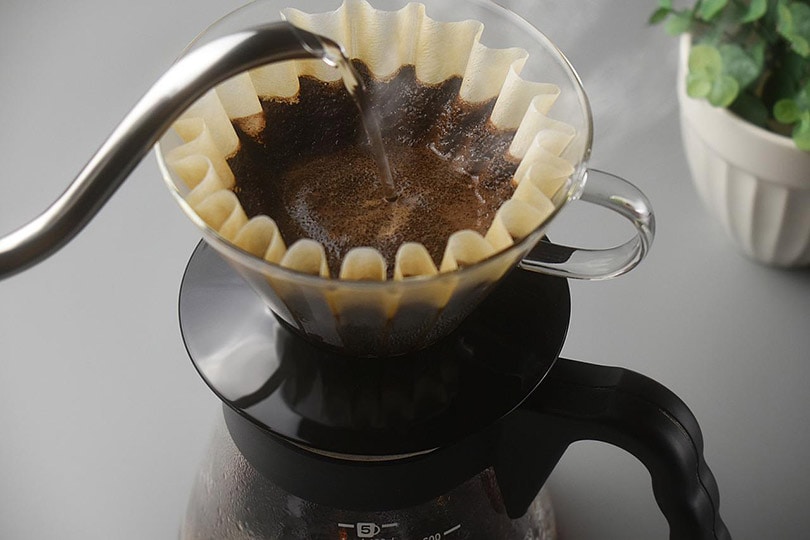
4. Cold Brew Your Coffee
Did you know that it’s possible to cold brew coffee without electricity? Instead of making hot brews continuously, it’s energy-saving to alternate with cold brews. Cold brewing is cheap and easy since it only requires a container and fridge.
Whereas hot brews are perfect for mornings, cold brews do well as the day unfolds. Consider trying your first cold brew when summer comes around to lower your energy bills.
5. Use Manual Coffee Makers Instead
Besides helping you develop exemplary coffee-making skills, manual coffee makers significantly reduce energy consumption in your home. Some of the most popular manual alternatives include Chemex, AeroPress, and Hario V60.
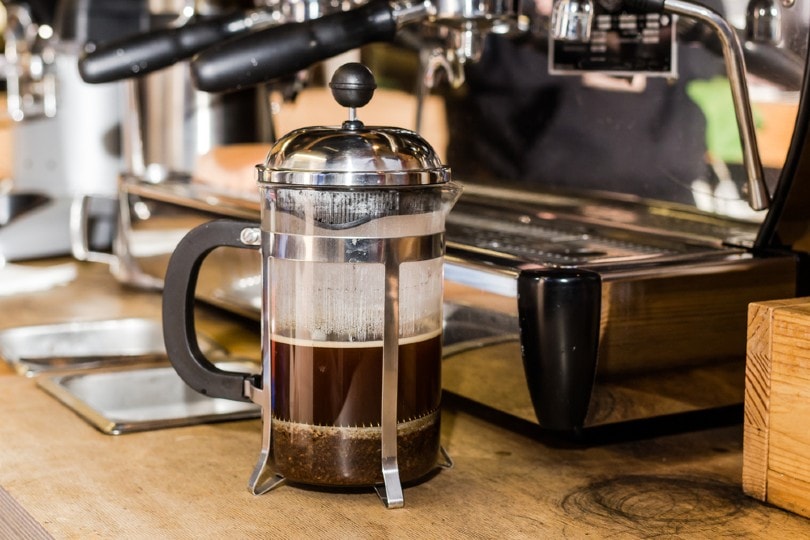
 Conclusion
Conclusion
After reading this article, it’s evident that Keurigs consume an average of 1,500 watts to start up and additional 200–400 watts to maintain the heat. The energy consumption rate may, however, vary across different Keurig models depending on the power input rating since higher-rated appliances consume more energy.
There are several ways to reduce the energy consumed by coffee makers, including using cheaper models, switching them off when the water boils, brewing a carafe size of coffee, and practicing cold brewing.
See also:
Featured Image Credit: Zack Xavier, Unsplash
Contents

